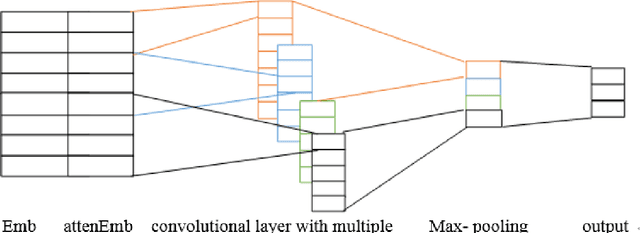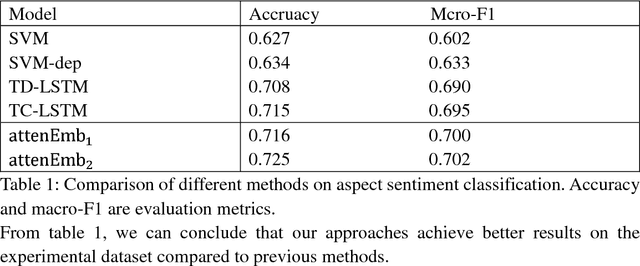Yifei Wu
Ming-Omni: A Unified Multimodal Model for Perception and Generation
Jun 11, 2025Abstract:We propose Ming-Omni, a unified multimodal model capable of processing images, text, audio, and video, while demonstrating strong proficiency in both speech and image generation. Ming-Omni employs dedicated encoders to extract tokens from different modalities, which are then processed by Ling, an MoE architecture equipped with newly proposed modality-specific routers. This design enables a single model to efficiently process and fuse multimodal inputs within a unified framework, thereby facilitating diverse tasks without requiring separate models, task-specific fine-tuning, or structural redesign. Importantly, Ming-Omni extends beyond conventional multimodal models by supporting audio and image generation. This is achieved through the integration of an advanced audio decoder for natural-sounding speech and Ming-Lite-Uni for high-quality image generation, which also allow the model to engage in context-aware chatting, perform text-to-speech conversion, and conduct versatile image editing. Our experimental results showcase Ming-Omni offers a powerful solution for unified perception and generation across all modalities. Notably, our proposed Ming-Omni is the first open-source model we are aware of to match GPT-4o in modality support, and we release all code and model weights to encourage further research and development in the community.
Cross-organ Deployment of EOS Detection AI without Retraining: Feasibility and Limitation
Nov 24, 2024



Abstract:Chronic rhinosinusitis (CRS) is characterized by persistent inflammation in the paranasal sinuses, leading to typical symptoms of nasal congestion, facial pressure, olfactory dysfunction, and discolored nasal drainage, which can significantly impact quality-of-life. Eosinophils (Eos), a crucial component in the mucosal immune response, have been linked to disease severity in CRS. The diagnosis of eosinophilic CRS typically uses a threshold of 10-20 eos per high-power field (HPF). However, manually counting Eos in histological samples is laborious and time-intensive, making the use of AI-driven methods for automated evaluations highly desirable. Interestingly, eosinophils are predominantly located in the gastrointestinal (GI) tract, which has prompted the release of numerous deep learning models trained on GI data. This study leverages a CircleSnake model initially trained on upper-GI data to segment Eos cells in whole slide images (WSIs) of nasal tissues. It aims to determine the extent to which Eos segmentation models developed for the GI tract can be adapted to nasal applications without retraining. The experimental results show promising accuracy in some WSIs, although, unsurprisingly, the performance varies across cases. This paper details these performance outcomes, delves into the reasons for such variations, and aims to provide insights that could guide future development of deep learning models for eosinophilic CRS.
Globally Optimal Movable Antenna-Enhanced multi-user Communication: Discrete Antenna Positioning, Motion Power Consumption, and Imperfect CSI
Aug 27, 2024



Abstract:Movable antennas (MAs) represent a promising paradigm to enhance the spatial degrees of freedom of conventional multi-antenna systems by dynamically adapting the positions of antenna elements within a designated transmit area. In particular, by employing electro-mechanical MA drivers, the positions of the MA elements can be adjusted to shape a favorable spatial correlation for improving system performance. Although preliminary research has explored beamforming designs for MA systems, the intricacies of the power consumption and the precise positioning of MA elements are not well understood. Moreover, the assumption of perfect CSI adopted in the literature is impractical due to the significant pilot overhead and the extensive time to acquire perfect CSI. To address these challenges, we model the motion of MA elements through discrete steps and quantify the associated power consumption as a function of these movements. Furthermore, by leveraging the properties of the MA channel model, we introduce a novel CSI error model tailored for MA systems that facilitates robust resource allocation design. In particular, we optimize the beamforming and the MA positions at the BS to minimize the total BS power consumption, encompassing both radiated and MA motion power while guaranteeing a minimum required SINR for each user. To this end, novel algorithms exploiting the branch and bound (BnB) method are developed to obtain the optimal solution for perfect and imperfect CSI. Moreover, to support practical implementation, we propose low-complexity algorithms with guaranteed convergence by leveraging successive convex approximation (SCA). Our numerical results validate the optimality of the proposed BnB-based algorithms. Furthermore, we unveil that both proposed SCA-based algorithms approach the optimal performance within a few iterations, thus highlighting their practical advantages.
PrPSeg: Universal Proposition Learning for Panoramic Renal Pathology Segmentation
Feb 29, 2024



Abstract:Understanding the anatomy of renal pathology is crucial for advancing disease diagnostics, treatment evaluation, and clinical research. The complex kidney system comprises various components across multiple levels, including regions (cortex, medulla), functional units (glomeruli, tubules), and cells (podocytes, mesangial cells in glomerulus). Prior studies have predominantly overlooked the intricate spatial interrelations among objects from clinical knowledge. In this research, we introduce a novel universal proposition learning approach, called panoramic renal pathology segmentation (PrPSeg), designed to segment comprehensively panoramic structures within kidney by integrating extensive knowledge of kidney anatomy. In this paper, we propose (1) the design of a comprehensive universal proposition matrix for renal pathology, facilitating the incorporation of classification and spatial relationships into the segmentation process; (2) a token-based dynamic head single network architecture, with the improvement of the partial label image segmentation and capability for future data enlargement; and (3) an anatomy loss function, quantifying the inter-object relationships across the kidney.
Movable Antenna-Enhanced Multiuser Communication: Optimal Discrete Antenna Positioning and Beamforming
Aug 04, 2023


Abstract:Movable antennas (MAs) are a promising paradigm to enhance the spatial degrees of freedom of conventional multi-antenna systems by flexibly adapting the positions of the antenna elements within a given transmit area. In this paper, we model the motion of the MA elements as discrete movements and study the corresponding resource allocation problem for MA-enabled multiuser multiple-input single-output (MISO) communication systems. Specifically, we jointly optimize the beamforming and the MA positions at the base station (BS) for the minimization of the total transmit power while guaranteeing the minimum required signal-to-interference-plus-noise ratio (SINR) of each individual user. To obtain the globally optimal solution to the formulated resource allocation problem, we develop an iterative algorithm capitalizing on the generalized Bender's decomposition with guaranteed convergence. Our numerical results demonstrate that the proposed MA-enabled communication system can significantly reduce the BS transmit power and the number of antenna elements needed to achieve a desired performance compared to state-of-the-art techniques, such as antenna selection. Furthermore, we observe that refining the step size of the MA motion driver improves performance at the expense of a higher computational complexity.
A Convolutional Neural Network for Aspect Sentiment Classification
Jul 04, 2018

Abstract:With the development of the Internet, natural language processing (NLP), in which sentiment analysis is an important task, became vital in information processing.Sentiment analysis includes aspect sentiment classification. Aspect sentiment can provide complete and in-depth results with increased attention on aspect-level. Different context words in a sentence influence the sentiment polarity of a sentence variably, and polarity varies based on the different aspects in a sentence. Take the sentence, 'I bought a new camera. The picture quality is amazing but the battery life is too short.'as an example. If the aspect is picture quality, then the expected sentiment polarity is 'positive', if the battery life aspect is considered, then the sentiment polarity should be 'negative'; therefore, aspect is important to consider when we explore aspect sentiment in the sentence. Recurrent neural network (RNN) is regarded as a good model to deal with natural language processing, and RNNs has get good performance on aspect sentiment classification including Target-Dependent LSTM (TD-LSTM) ,Target-Connection LSTM (TC-LSTM) (Tang, 2015a, b), AE-LSTM, AT-LSTM, AEAT-LSTM (Wang et al., 2016).There are also extensive literatures on sentiment classification utilizing convolutional neural network, but there is little literature on aspect sentiment classification using convolutional neural network. In our paper, we develop attention-based input layers in which aspect information is considered by input layer. We then incorporate attention-based input layers into convolutional neural network (CNN) to introduce context words information. In our experiment, incorporating aspect information into CNN improves the latter's aspect sentiment classification performance without using syntactic parser or external sentiment lexicons in a benchmark dataset from Twitter but get better performance compared with other models.
 Add to Chrome
Add to Chrome Add to Firefox
Add to Firefox Add to Edge
Add to Edge